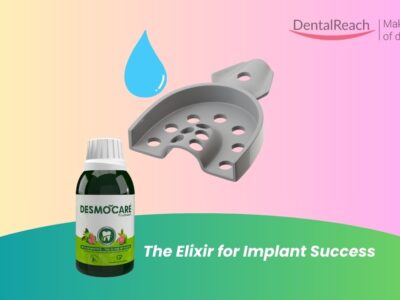In restorative dentistry, achieving a natural-looking tooth restoration is paramount. The color adjustment potential (CAP00) of resin composites plays a critical role in this process, as it determines how well the composite material blends with the surrounding tooth structure.
Understanding Color Adjustment Potential and CIEDE2000
Color adjustment potential (CAP00) refers to a composite’s ability to adapt its color to match adjacent dental structures. The CIEDE2000 color difference (ΔE00) formula is a method for quantifying these differences, considering factors such as lightness, chroma, and hue.
Methods Employed in the Study
The study investigated three types of single-shade resin composites: Vittra APS color DA3 (FGM Dental), Vittra APS Unique (VU) (FGM Dental), and Omnichroma (Tokuyama Dental). Researchers produced two types of specimens:
- Single specimens using each composite.
- Dual specimens with varying cavity wall thicknesses (3 mm, 2 mm, 1 mm) were restored with VU or Omnichroma.
Digital photographs were used to capture CIEL∗a∗b∗ color coordinates at different locations on the specimens. Subsequently, ΔE00 and CAP00 values were calculated. Statistical analyses included various tests such as 2-way ANOVA, Kruskal-Wallis, Holm-Sidak, Student-Newman-Keuls, Wilcoxon signed rank, and paired t-tests.
Key Findings from the Research
Impact of Wall Thickness on ΔE00 and CAP00 Values
The study revealed that thinner cavity walls significantly impacted color matching:
- 1-mm-thick walls exhibited higher ΔE00 values and lower CAP00 values.
- This effect was especially pronounced for Vittra APS Unique (VU), affecting primarily the central area of restorations.
Restorations’ Color Matching Performance
Restorations showed better color matching at their periphery compared to their central areas:
- Overall ΔE00 means exceeded both perceptibility threshold (0.8) and acceptability threshold (1.8).
- For 3-mm and 2-mm thick walls, color differences were moderately unacceptable.
- For 1-mm thick walls, these differences were extremely unacceptable.
Lightness Difference as a Determining Factor
Both VU and Omnichroma showed a ΔE00 shift mainly driven by lightness differences rather than chroma or hue variations. Positive CAP00 values indicated some level of successful adaptation for both composites despite these challenges.
Practical Implications for Clinicians
Given these findings, clinicians should consider several practical implications when working with single-shade resin composites:
- Thickness Matters: Thicker cavity walls tend to support better color matching outcomes.
- Material Selection: Different materials exhibit varying degrees of susceptibility to thickness-related changes in CAP00.
- Attention to Detail: Paying close attention to structural characteristics can enhance aesthetic results in restorative procedures.
Conclusion
The study underscores that wall thickness significantly affects the color adjustment potential of single-shade resin composites. Particularly at thinner dimensions like 1 mm, this impact becomes more pronounced—especially for Vittra APS Unique—leading to less satisfactory aesthetic outcomes primarily driven by lightness discrepancies. Clinicians must be mindful of these factors when aiming for optimal cosmetic results in dental restorations.
By understanding these dynamics and carefully selecting materials while considering structural characteristics like wall thickness, dental professionals can achieve superior aesthetic outcomes that meet patient expectations effectively.
Source: Journal of American Dental Association




















Comments